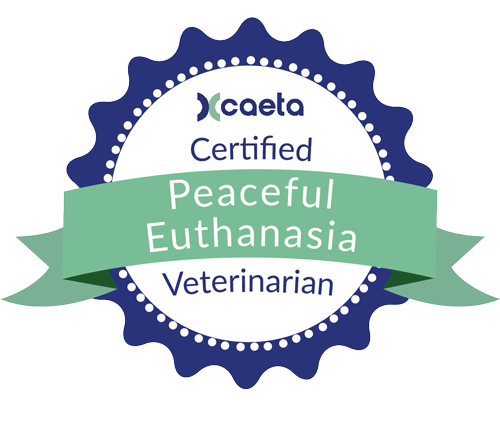If you’re visiting our website you probably have many questions about the process of pet euthanasia. Here you’ll find some common questions and answers about this difficult and very personal decision.
- Changes in behavior: You may notice your pet seem more irritable or temperamental or they may choose to withdraw more instead of spending time with the family, or you may notice them panting more frequently, becoming more anxious/unsettled, especially at night, experiencing urinary or fecal incontinence
- Changes in appetite: Loss of appetite or refusal to eat. Increased appetite with weight loss can also be of concern
- Changes in mobility: Difficulty getting up, walking, jumping, or climbing stairs. Legs beginning to splay, uncoordinated movements, dragging feet
- Vocalization: Whimpering, yelping, or meowing more than usual
- Changes in grooming habits: Neglecting grooming or over-grooming in specific areas
There are many helpful websites and services such as Lap of Love, which have great Quality of Life Resources, such Pet Quality of Life Daily Assessment and Pet Quality of Life Scale.
While most of us as pet owners would love for our pets to pass peacefully in their sleep and not put us owners in a position to have to make the decision for them, this rarely ends up being their reality. Many owners also prefer to be there for their pet’s final moments when they pass.
A natural death can be difficult to watch especially in their final days to week(s) and oftentimes suffering is endured before their body does shut down completely. Some medical conditions cause a peaceful, natural death to be less likely than others. If you have any questions, regarding your pet’s medical condition and what to expect as this condition progresses, we are happy to speak with you!
Thankfully, no! Euthanasia is designed to be a painless and peaceful procedure. The most pain pets typically appreciate is the quick needle poke (similar to a vaccine) when being given their sedation. Oftentimes if you have some of their favorite toys or snacks on hand, this can be a welcomed distraction, that they may not even feel the injection at all!
To some degree, this is up to the family and their preferences. On average, in-home euthanasia takes approximately one hour to allow time for the families to say their goodbyes, for the sedation to take effect, for the pet to pass peacefully once the final medication has been given, and for the preparations to be made for the body aftercare. Due to the variability in patients’ health status and medical conditions, some patients will respond to the medications more quickly than others.
Many owners struggle with strong feelings of guilt when deciding on the right time to euthanize their pet. As pet owners, we are responsible for loving, caring for, and being our pet’s biggest advocates for the entirety of their lives and advocating for them and their end of life care is no different. Your pet loves you and trusts you to do what is best for them, as you know them better than anyone else does! Although this responsibility can feel heavy at times, it is comforting knowing we are able to prevent suffering and distress in our beloved pets.
Reach out to us.
If you are visiting our website, you probably have questions about pet euthanasia. We’re here to help.


